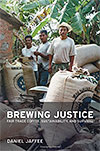Dem bones
The Conner has one of the biggest collections of bird skeletons in the nation. Kelly Cassidy opens a drawer and pulls out a box the size of a small microwave oven. It rattles. It contains a disarticulated golden eagle skeleton, each piece labeled with a number (except for the very smallest, which are about the size of a sesame seed).
“Our skeletons are literally boxes of bones,” she says. The Museum has a few dozen skeletons that have been fully assembled, which are useful for public display, but not for research that requires being able to look at the bones from all angles.
The most … » More …

